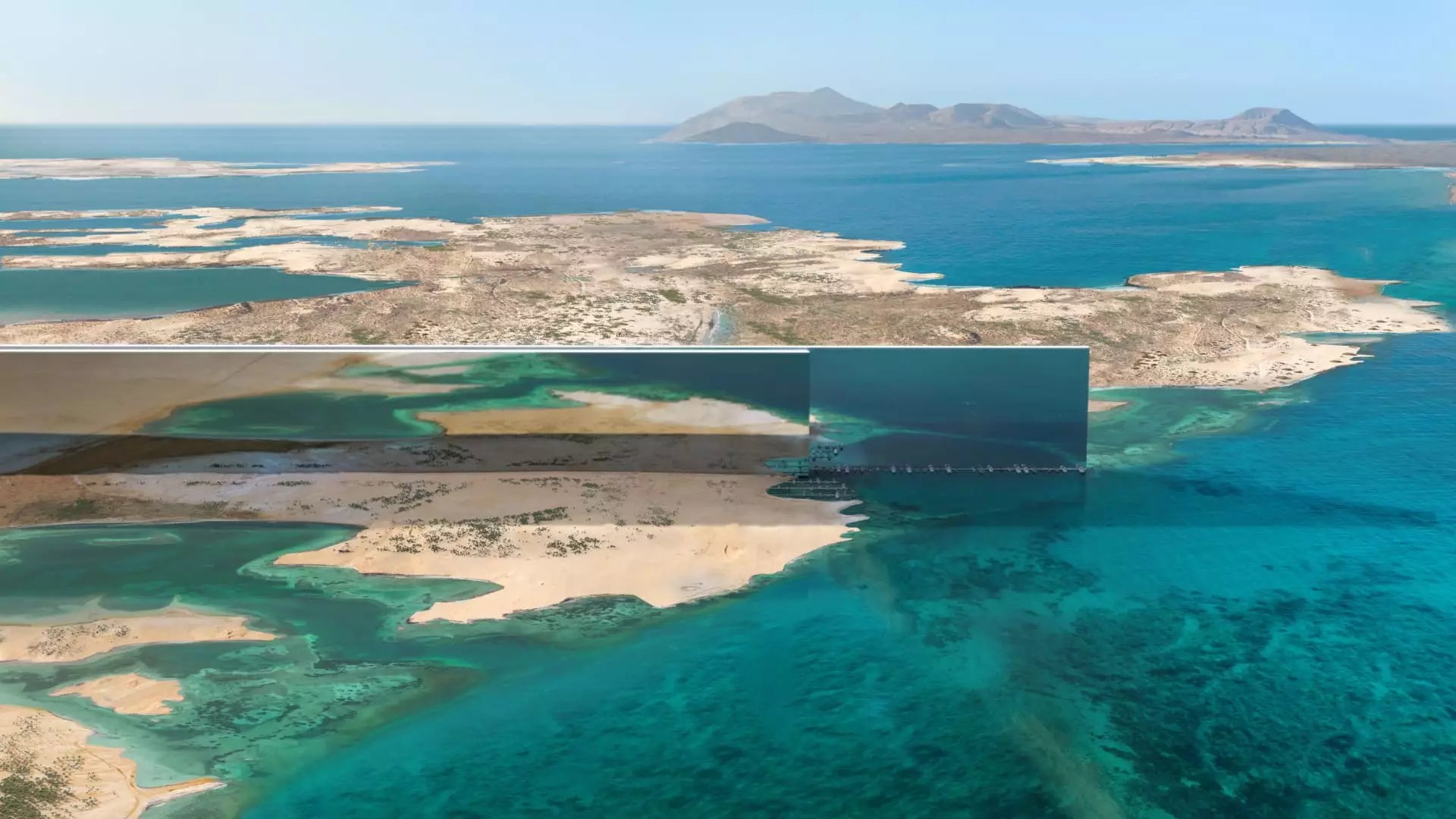Saudi Arabia’s grand ambition to redefine urban development through Neom’s The Line exemplifies the perilous allure of dreaming big without pragmatic foundations. At first glance, the concept of a 105-mile futuristic, high-tech city nestled in the desert appears to be a bold leap toward innovation and economic diversification. However, beneath this shiny veneer lies a web of over-optimistic projections, unchecked hubris, and mismanagement that threaten to turn one of the most expensive infrastructure endeavors into a colossal white elephant. The recent reassessment by the Saudi sovereign wealth fund signals an overdue recognition of these underlying flaws—a sobering reality check that exposes the project’s shaky economic and technological footing.
Mega-projects like The Line perpetually attract admiration and skepticism in equal measure. The allure of transforming the Saudi desert into an ultra-modern metropolis is intoxicating, yet the scope and scale of such an undertaking are often divorced from practicality. Visionary plans, powered by political enthusiasm and national pride, frequently overlook the ground realities—cost overruns, technological hurdles, and market feasibility. As the global economy faces increasing volatility and declining oil prices, the assumptions that underpinned these projects lose relevance, making reassessment not just prudent but necessary. The Saudi government’s decision to scrutinize The Line demonstrates a rare acknowledgment that brilliance alone cannot sustain a project of this magnitude without solid economic and engineering validation.
Financial Strain and Political Overreach
The financial weight of Neom’s ambitions is staggering, with estimates soaring towards $1.5 trillion—a sum that dwarfs many nation’s entire infrastructure budgets. Yet, Saudi Arabia’s economic resilience has been tested by fluctuating oil revenues, diminishing global demand, and mounting public debt. In this context, Project Neom functions less as a visionary beacon and more as a risky gamble on continued oil prosperity. The recent budget deficits and falling oil prices precisely expose the fragility of ambitious projects predicated on vast hydrocarbon income.
Essentially, the revisitation of The Line’s feasibility reveals a fundamental misjudgment: that the kingdom could sustain such an extraordinary enterprise amid a more restrained economic environment. The global shift toward renewable energy and diversified economies compels Saudi policymakers to question whether pouring hundreds of billions into a politically driven “utopia” is a wise economic strategy. With many investors and foreign partners scrutinizing Saudi priorities, the overhyped narrative of a futuristic cityscape lays in stark contrast with fiscal realities. This cautious re-evaluation underscores a painful truth—what once seemed an unstoppable wave of progress now appears more like an unsinkable Titanic heading toward iceberg-sized financial trouble.
Technological and Logistical Dreams Versus Harsh Realities
The technological promises of The Line are perhaps its most tenuous aspect. While imaginations have been captivated by ideas of levitating transportation, AI-driven city management, and sustainable living, implementing these fantasies at scale remains largely unproven. Critics argue that the project’s architects have overly relied on optimistic forecasts, often shrouded in corporate “yes-man” culture encouraged by consultants eager to secure continued commissions. The risk of technological overreach—investing heavily in innovations that might never materialize—poses a severe threat to project viability.
Moreover, the logistical enormity of building such a city in a remote desert presents insurmountable challenges. From constructing high-speed rail links through shifting sands to sourcing sustainable energy in an arid climate, the hurdles are compounded by environmental factors and resource constraints. Timeframes that once projected rapid completion are now under threat of indefinite delay, creating a cycle of cost escalation and disillusionment among stakeholders. The confidence once placed in the project’s futuristic promise has been chipped away by the palpable realities of engineering, climate, and market risk.
Leadership and Management: The Root of the Crisis
The internal dynamics of Neom’s leadership shed light on why this project floundered from the outset. An overreliance on optimistic forecasts and a “groupthink” mentality created an echo chamber that favored rapid expansion over cautious planning. The absence of tough scrutiny and critical risk assessment allowed distortions in project evaluations to fester, inflating expectations beyond what was realistically achievable.
Critics have been blunt in their assessment, warning that the cultural proclivity toward conformity and avoidance of dissent has hampered effective decision-making. The recent move to undertake a strategic review indicates a necessary pivot toward more accountable governance, but it may be too late to salvage the initial vision without significant scaling back. The temptation to maintain the project’s grandeur at all costs remains a destructive incentive, risking a future where the project’s failure damages Saudi Arabia’s credibility more than its economic prospects.
Revising the Future: Is Smaller Still Possible?
While the boldness behind The Line has drawn admiration, it now seems increasingly futile to continue betting on such an expansive vision. The reality is that a scaled-down, more pragmatic approach might be the only way forward—one that recognizes both technological limits and fiscal constraints. For Saudi Arabia, the lesson here isn’t just about the failure of one mega-project but about how leadership should approach ambitious endeavors in a world that no longer tolerates unchecked hubris.
As the kingdom faces difficult choices, it must embrace a more realistic, ground-up approach to economic diversification and technological innovation. The original allure of The Line, with its promise of a utopian future, must yield to the harsher realization that sustainable development depends on incremental progress, meticulous planning, and humility in the face of complexity. This shift, painful as it might be for visionaries, is ultimately necessary for any hope of transforming a desert into a beacon of modernity—without turning into a symbol of overreach and fiscal recklessness.
In this context, Saudi Arabia’s boldest challenge may not lie in constructing futuristic cities but in cultivating the wisdom to know when to cut losses, reassess priorities, and build with realism—not fantasy.


Leave a Reply